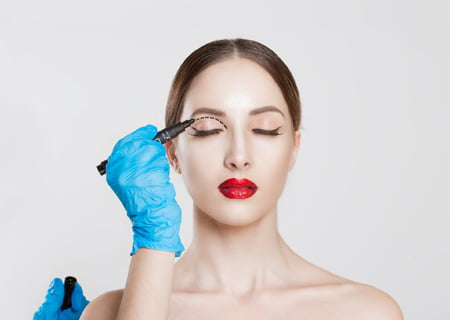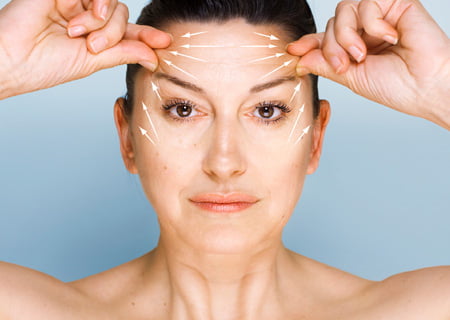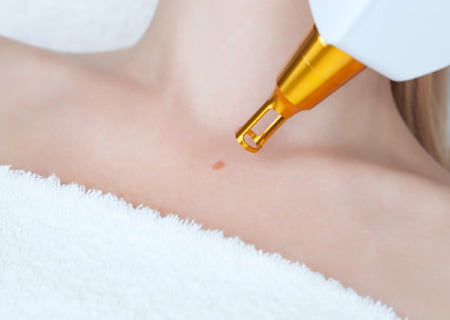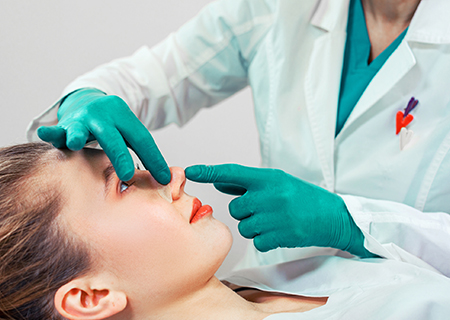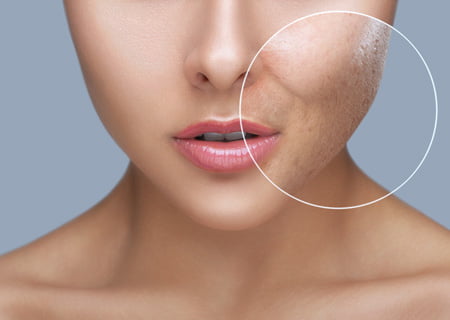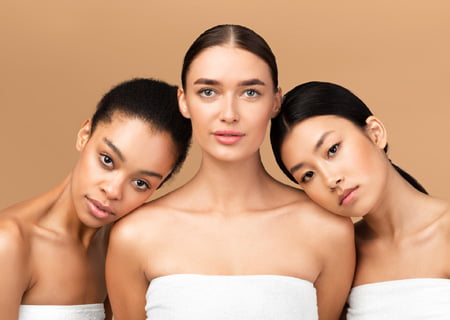12 Nose Types & Their Role in Rhinoplasty
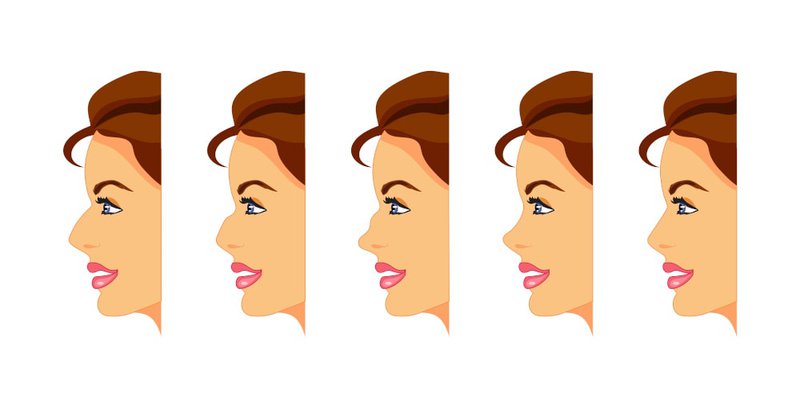
Every nose is unique — but grouping common shape patterns helps us talk about goals, limits, and technique. Below are 12 frequently discussed nose “types,” what they mean anatomically, and how Dr. Zakhary typically approaches them with a Closed Mini-Dissection Ultrasonic Rhinoplasty (internal incisions, precise shaping, faster recovery). Most people are a combination of several features, so planning is always individualized.
1) Straight / “Greek” Dorsum
Hallmarks: A relatively straight bridge from radix (between the eyes) to tip.
Common goals: Subtle refinement if the bridge looks too flat or long; occasional tip definition changes.
In surgery: Very conservative ultrasonic contouring of the bridge (or none), plus tip sutures and tip refinement for definition, keeping proportions natural.
2) Dorsal Hump / “Aquiline” or “Roman”
People also search
Hallmarks: Convex bridge; hump can be bony, cartilaginous, or both.
Common goals: Smooth the profile while keeping a strong, balanced nose.
In surgery: Ultrasonic reduction for millimetre-level accuracy, controlled osteotomies to re-align the nasal bones, and tip/radix adjustments to maintain harmony.
3) Upturned / “Celestial”
Hallmarks: Slightly shorter nose, mild supratip break, tip rotates upward.
Common goals: Keep the delicate look without an “over-rotated” or scooped profile.
In surgery: Cartilage-sparing tip work; if needed, subtle support to prevent over-rotation and maintain a natural bridge-to-tip transition.
4) Drooping (Ptotic) Tip
Hallmarks: Tip points down at rest or when smiling; can obscure upper lip.
Common goals: Elevate and support the tip without looking “done.”
In surgery: Reorient and support the tip with sutures and possibly small grafts from your own body nasal or ear cartilage; address depressor septi muscle dynamics; often paired with modest hump reduction for a smooth line.
5) Bulbous or Rounded Tip
Hallmarks: Broad, spherical tip; often thicker skin or robust lower lateral cartilages.
Common goals: Front-view definition without pinching.
In surgery: Cartilage reshaping (not over-resection), possible precise tip sutures, sometimes a small tip graft from your own body nasal or ear cartilage to sharpen light reflexes—planned around skin thickness.
6) Boxy Tip
Hallmarks: Square-ish tip with wide domes; weak definition.
Common goals: Softer, more refined outline.
In surgery: Dome maneuvers /cephalic trim as appropriate, dome equalization, and tip-support maneuvers; alar base work only if nostril width contributes.
7) Wide Alar Base / Flaring Nostrils
Hallmarks: Nostril base extends beyond the ideal alar facial groove; dynamic flaring.
Common goals: Narrow the base and reduce flare while preserving function.
In surgery: External alar base reduction with careful scar placement in natural creases; internal flare reduction can be combined with tip work.
8) Crooked / Deviated Nose
Hallmarks: Axis deviates left or right; may include twisted mid-vault; often breathing issues.
Common goals: Straighter appearance and improved airflow.
In surgery: Septoplasty and structural rhinoplasty together; controlled osteotomies, dorsal contouring grafts for mid-vault stability, and cartilage grafting to resist relapse.
9) Low Bridge / Saddle-Type Deformity
Hallmarks: Depressed mid-dorsum or overall low radix/bridge.
Common goals: Build height for a balanced side profile without looking artificial.
In surgery: Dorsal augmentation using cartilage grafts for natural feel and longevity, plus fine ultrasonic contouring to blend edges seamlessly.
10) Overprojected or Underprojected Tip
Hallmarks: Tip sticks out too far (overprojected) or sits too close to the face (underprojected).
Common goals: Bring the tip into ideal balance with the lips and chin.
In surgery: For overprojection, controlled cartilage set-backs and deprojection sutures; for underprojection, structural tip grafts and support to advance the tip naturally.
11) Long Nose
Hallmarks: Increased tip–radix distance; may coincide with a drooping tip.
Common goals: Shorten the visual length without creating a “turned-up” look.
In surgery: Subtle tip rotation/support, caudal septum adjustments as appropriate, and dorsum rebalancing so the eye reads the nose as shorter yet elegant.
12) “Fleshy” / Thick-Skinned Nose
Hallmarks: Thicker sebaceous skin and subcutaneous tissue; softer definition.
Common goals: Sharper tip/bridge highlights while respecting skin biology.
In surgery: Cartilage shaping and framework support to push definition through thicker skin; clear guidance on swelling control and realistic timelines.
Why “type” matters — but never replaces a consultation
Labels are a starting point. What actually guides your plan are proportions (bridge height, radix position, tip projection/rotation), skin thickness, and nasal function (septum, valves, turbinates). Two people with the same “type” can need very different techniques depending on their anatomy and goals. Our assessments always consider both appearance and breathing.
Our technique: Closed Mini-Dissection Ultrasonic Rhinoplasty
Dr. Zakhary performs rhinoplasty through internal incisions with ultrasonic bone sculpting. Benefits include precise hump reduction, controlled osteotomies, and typically less swelling and bruising, helping you return to normal life sooner while keeping results natural and predictable.
Quick comparison: front- vs side-view concerns
| Concern | What you see | What we assess | Typical correction (closed approach where suitable) |
|---|---|---|---|
| Dorsal hump | Bump on profile | Hump makeup, radix height | Ultrasonic reduction, osteotomies, radix/tip balance |
| Low bridge | Flat profile | Dorsal support, skin envelope | Cartilage augmentation, fine contour blending |
| Crooked nose | Off-centre axis | Septum, bony pyramid, mid-vault | Septoplasty, structural and dorsal contouring grafts, controlled osteotomies |
| Drooping tip | Tip points down | Tip support, caudal septum, muscle pull | Tip rotation/support, muscle management |
| Over/under-projection | Tip too far/too close | Tip–lip–chin balance | Deprojection sutures/set-backs OR structural tip grafts |
| Boxy/bulbous tip | Wide, low definition | Cartilage shape, skin thickness | Dome sutures, conservative reshaping, small tip graft |
| Wide alar base | Broad nostrils/flare | Alar-facial groove, dynamic flare | Alar base reduction; internal flare reduction |
| Valve collapse | Airflow drops on inhale | Valve angles, sidewall rigidity | structural and dorsal contouring grafts, alar batten/rim grafts |
Most noses combine features — plans are individualized to proportion, skin, and function.
Typical recovery snapshots (may vary)
- Splint on ~2 weeks; social downtime usually 14 days
- Most bruising fades by 2 weeks; swelling continues to refine for several months
- Light exercise resumes gradually; milestones are tailored to your case
Frequently asked questions
Can I combine aesthetic changes with breathing correction?
Yes. Many patients pair cosmetic rhinoplasty with septoplasty and valve support to improve airflow while refining shape.
Do thicker-skinned noses see results?
Absolutely, but strategy matters. We focus on strong framework support and tip definition, then guide you on swelling control and realistic timelines.
Is “ethnic rhinoplasty” different?
The aim is to refine while respecting heritage features . Planning emphasizes proportion, function, and maintaining identity, not copying a single ideal. Techniques such as dorsal augmentation or alar base refinement are selected to suit your anatomy.
Ready to talk about your nose?
Bring your goals, and a few inspiration photos of how you would like your profile to look. In a consultation, we will:
- Examine proportions, skin thickness, and breathing (septum/valves)
- Discuss a closed, mini-dissection ultrasonic plan tailored to you
- Outline recovery milestones and what to expect at each stage
- Review realistic outcomes based on your anatomy
Prefer to start with questions? Call our Calgary office or send a message, our team is happy to help.


